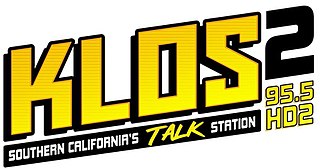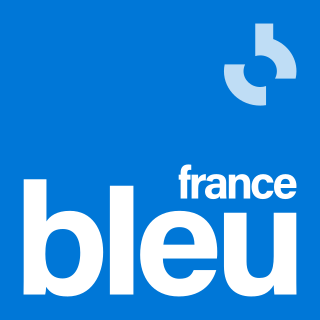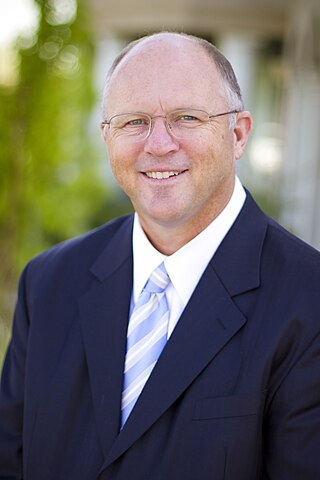Related Research Articles
The mass media in Poland consist of several different types of communications media including television, radio, cinema, newspapers, magazines, and Internet.
Dead air, also known as unmodulated carrier, is an unintended period of silence that interrupts a broadcast during which no audio or video program material is transmitted.

The Turkish Radio and Television Corporation is the national public broadcaster of Turkey, founded in 1964. TRT was for many years the only television and radio broadcaster in Turkey. Before the introduction of commercial radio in 1990, and subsequently commercial television in 1992, it held a monopoly on broadcasting. More recent deregulation of the Turkish television broadcasting market produced analogue cable television. Today, TRT broadcasts around the world, including in Europe, the Middle East, Africa, Asia, the United States, and Australia.
KQED-FM is a listener-supported, non-commercial public radio station in San Francisco, California. It is simulcast on KQEI-FM in the Sacramento metropolitan area. The parent organization is KQED Inc., which also owns two PBS member television stations: KQED and KQEH. Studios are on Mariposa Street in the Mission District of San Francisco.
Family Radio, also known by its licensee name Family Stations, Inc., is a non-profit Christian radio network based in Franklin, Tennessee with network operations located in Alameda, California, United States. Established in 1959, Family Radio airs religious programming including Calvinist Christian teaching, hymns, and modern worship music.

KLOS is a commercial radio station that is licensed to Los Angeles, California, and serves the Greater Los Angeles area. The station is owned by Meruelo Media. KLOS airs a mainstream rock radio format and has broadcast rock music in some form since 1969. The studios are on West Olive Avenue in Burbank.

Magyar Rádió was Hungary's publicly funded radio broadcasting organisation until 2015. It was also the country's official international broadcasting station.

Telewizja Polska S.A., also known in English as Polish Television, is a public service broadcaster in Poland, founded in 1952. It is the oldest and largest Polish television network. After 2015, when the right-wing populist Law and Justice (PiS) party won the Polish parliamentary election, TVP progressively aligned with the speaking points of the PiS government. In the run-up to the 2023 Polish parliamentary election, TVP was designated as a "propaganda arm" of PiS by European media and as "a factory of hate" by the Polish opposition. However, after the electoral victory of the opposition party the Civic Platform in 2023, a newly-appointed Minister of Culture began a restructuring of the broadcaster and its news segment. On December 27, 2023, the Minister of Culture and National Heritage, due to the President's veto on the financing of the company, placed it in liquidation.
A radio format or programming format describes the overall content broadcast on a radio station. The radio format emerged mainly in the United States in the 1950s, at a time when radio was compelled to develop new and exclusive ways to programming by competition with television. The formula has since spread as a reference for commercial radio programming worldwide.

KPFT is a listener-sponsored community radio station in Houston, Texas, which began broadcasting March 1, 1970 as the fourth station in the Pacifica radio family. The station airs a variety of music, news, talk, and call-in programs, most ranging from center-left to far-left. Prominent persons who have been regulars on KPFT include science educator David F. Duncan and humorist John Henry Faulk.

Air1 is an American Christian radio network owned by the Educational Media Foundation (EMF), a non-profit Christian ministry. It primarily broadcasts contemporary worship music, and is a sister to the EMF's K-Love network.

WLBJ was the first commercial radio station in Bowling Green, Kentucky, signing-on in June 1940. The station operated at 1410 kilohertz for much of its existence.

France Bleu is a network of local and regional radio stations in France, part of the national public broadcasting group Radio France. The network has a public service mission to serve local audiences and provides local news and content from each of its forty-four stations.
The year 2007 in radio involved some significant events.

WVTF is a non-commercial educational radio station licensed to serve Roanoke, Virginia, featuring a public radio format branded "Radio IQ". Owned by Virginia Polytechnic Institute and State University through its fundraising arm, the Virginia Tech Foundation, the station carries programming from NPR, the Public Radio Exchange, American Public Media and the BBC World Service. WVTF is a listener-supported station, holding periodic fundraisers on the air. The studios and offices are on Kingsbury Lane in Roanoke.

WRNL is a commercial radio station licensed to Richmond, Virginia. WRNL features a sports radio format and is owned and operated by Audacy, Inc. The studios, offices and transmitter are all co-located just north of the Richmond city line on Basie Road in Dumbarton, Virginia.

WUEC is a radio station in Eau Claire, Wisconsin, United States. The station is part of Wisconsin Public Radio (WPR) and broadcasts its WPR Music service consisting of classical and jazz music with news updates. WUEC also broadcasts local programming from studios in the Wisconsin Public Broadcasting regional center in Eau Claire and three hours of student programming a week from studios in the Hibbard Humanities building at the University of Wisconsin–Eau Claire (UW-EC).

WMRN is a commercial AM radio station broadcasting a news/talk format. It is licensed to Marion, Ohio, and is owned by iHeartMedia, Inc., through licensee iHM Licenses, LLC. It features programming from Fox News Radio and Premiere Networks.

KMCH is a full-service radio station licensed to Manchester, Iowa, serving Manchester and Delaware County. KMCH is owned and operated by Delaware County Broadcasting and broadcasts from a tower in rural Delaware County, east of Manchester.

Paul Chappell is an American pastor who has served as the senior pastor of Lancaster Baptist Church since 1986. He is the president and founder of West Coast Baptist College, Lancaster Baptist School, and Striving Together Publications.
References
- ↑ Geller, Valerie (2009-10-15). Creating Powerful Radio: Getting, Keeping and Growing Audiences News, Talk, Information & Personality Broadcast, HD, Satellite & Internet. Taylor & Francis. ISBN 978-1-136-02401-6.
- ↑ Lochte, Bob (2015-02-16). Christian Radio: The Growth of a Mainstream Broadcasting Force. McFarland. ISBN 978-1-4766-0938-6.
- ↑ Amir, Sayed Mohammad (2024-02-20). A Career in Radio: Understanding the Key Building Blocks. Taylor & Francis. ISBN 978-1-003-85385-5.
- ↑ Johnston, Jessica (2018-11-08). "The Wolf country radio celebrates 70th anniversary with operation expansion". Y-City News. Retrieved 2024-07-16.
- ↑ Rossman, Gabriel (2012-07-22). Climbing the Charts: What Radio Airplay Tells Us about the Diffusion of Innovation. Princeton University Press. ISBN 978-1-4008-4244-5.
- ↑ Lyon, L. B. (2004). "Full Service Radio". Scribe: The Newsletter for Christian Broadcast News. PLUSCOM.